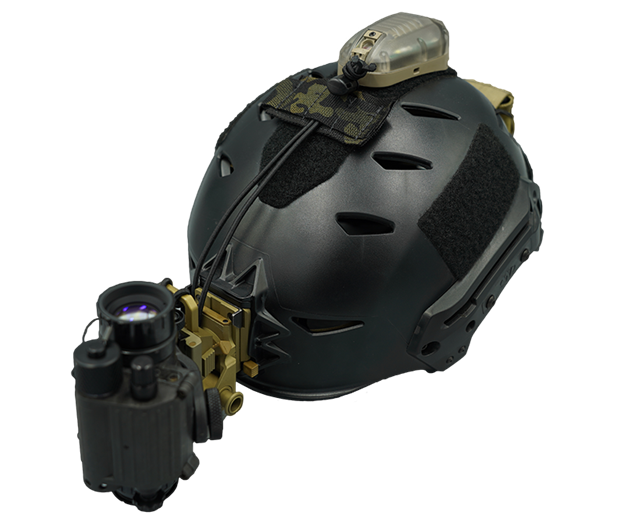Though night vision technology has been around since before World War II, it became more prevalent after the Vietnam War, when devices advanced enough to allow for increased mobility.
These days, you can find a wide range of night vision devices suitable for various nighttime activities, from hunting and hiking to military and police force tactical uses.
To achieve the functionality you desire, you need to be armed with information to help you find the right night vision equipment.
Determine Which Night Vision System You Need
You have many NOD options, and it’s best to have it in hand before choosing your helmet. NODs come in three different types based on the number of night vision tubes:
- Night vision monocular: A monocular has a single tube used with one eye, providing the narrowest field of vision. The PVS 14 model is considered the best all-around device in the U.S. Armed Forces, NATO, and Special Ops.
- Night vision binoculars: Binoculars are fitted with a dual tube and provide an image with better depth perception but are more cumbersome to carry.
- Night vision quads: These NODs provide the widest sight range, but they aren’t for everyone and come with a higher price tag.
The best night vision goggles also come with white phosphor, producing a night vision image in grayscale. One of the many benefits of this night-adapted vision technology is that it gives you a clearer image than green phosphor technology.
Choose the Right Helmet
The first decision you will make when selecting your gear is what type best suits your intended use. There are two basic categories: ballistic and non-ballistic.
When To Choose a Ballistic Helmet
Ballistic helmets have the highest level of protection. If you use your NVGs in situations that might expose you to fast-moving objects, such as bullets and shrapnel, this is the best option for you and can save your life.
When To Choose a Bump Helmet
A bump helmet does not provide the same degree of protection. This night vision helmet guards against head injury from falls or bumps. It’s suitable for situations where the most significant concerns are hazards you might encounter from low light conditions.
Search for a Helmet That Fits Your Night Vision Gear
Once you know what type of helmet you need, the next thing you need to know is how to find one that fits your NVG.
Railing
Most night vision helmets used in military or police operations have a helmet-mounted rail fitted to the top or side that allows you to attach your accessories.
Shroud
The shroud is the helmet-mounted fixture that allows you to attach your night vision goggles to keep it securely in place.
There are two possibilities:
- Standard: Most NVGs work with the standard shroud mounting system, so there’s a good chance yours will too.
- Counterbore: If your night vision goggles have a large objective lens, the standard shroud won’t work for you, and you’ll need to search for an NVG mount with a counterbore shroud.
Check the compatibility between the mount and the shroud. Some PVS 14 brands attach proprietary mounts that require you to purchase a specific type of shroud.
Suspension
There are two suspension systems to choose from. Though the under-the-chin system is more secure, most are over-the-head models. You may also consider counterweights to secure your goggles so they don’t slip. These lead weights attach to the back to balance the weight of the NOD on the front.
Light Source
A final important consideration is your helmet-mounted light source. A visible source is an option, but most products use infrared LED lights. The benefit of an IR illuminator is that it emits light that is invisible to the eye but can be picked up by your NOD.
You’ll also need to determine whether you want ambient light or a directional source. A side benefit of the latter in combat is that you can use it to blind an opponent heading in your direction.
Get a Valid Export License
Arms regulation places guidelines on international traffic. It’s important to note that exporting your NVG and night vision helmet without a valid export license issued by the U.S. Department of State Office and Defense Trade Controls is strictly prohibited.
Find the Best Helmet for Your Night Vision Goggles
Whatever your needs, Steele Industries has a night vision helmet for you. They offer bump and ballistic styles at sale prices that will save you money. Search our selection of night vision helmets, and if you have any questions, their customer service team is there to help.
Before you checkout, be sure to know whether arms regulation for international traffic applies to you. If so, be sure you have a valid export license issued by the U.S. Department of State Office and Defense Trade Controls. Exporting these products without a license is strictly prohibited.


